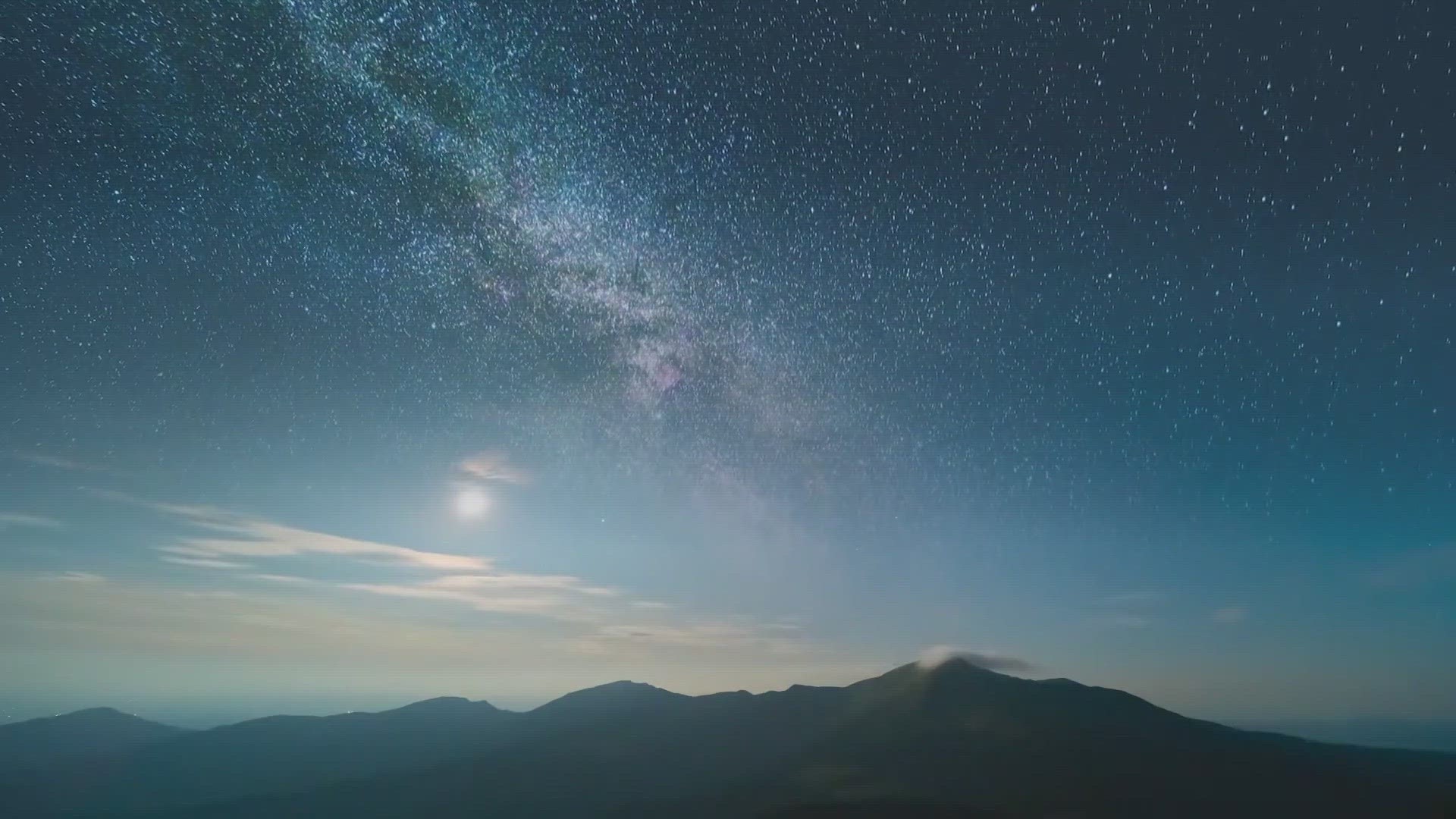WASHINGTON — Stargazers this week have a short window to see the peak of the first meteor shower of 2024.
The Quadrantids meteor shower, considered among the top annual meteor showers, peaks between Jan. 3 and Jan. 4, or Wednesday night into Thursday morning.
During peak activity and under favorable conditions, these showers can produce about 120 shooting stars per hour. But while most meteor showers tend to have a two-day peak, NASA says the Quadrantids have a much smaller peak window -- often lasting just a few hours.
"The Quadrantids have the potential to be the strongest shower of the year but usually fall short due to the short length of maximum activity (6 hours) and the poor weather experienced during early January," the American Meteor Society said.
After the Quadrantids wrap up, there's a long stretch where no major meteor showers are taking place.
How to watch the Quadrantids meteor shower
The Quadrantids are best viewed in the Northern Hemisphere at night and predawn hours. NASA says to find an area away from city or street lights then lie flat on your back with your feet facing northeast and look up, taking in as much of the sky as possible.
If you do try to catch a glimpse of the Quadrantids, you'll want to come prepared for the January overnight weather with a blanket, sleeping bag or chair.
The American Meteor Society notes that the half-illuminated moon will interfere somewhat with meteor shower viewing, but can be minimized by blocking the moon with a tree or building.
What time is the meteor shower?
Knowing what time to look for the Quadrantids is extremely important, given its peak only lasts a few hours. This year, the peak for those viewing in North America is expected to occur Thursday, Jan. 4, between 4 a.m. Eastern (1 a.m. Pacific) to 10 a.m. Eastern (7 a.m. Pacific), according to the International Meteor Organization.
Don't worry if you don't spot meteors right away, as it may take up to half an hour for your eyes to adjust to the dark.
"Be patient – the show will last until dawn, so you have plenty of time to catch a glimpse," NASA explains on its website.
Meteors will appear to come from the constellation of Bootes (located near the end of the handle of the "Big Dipper"). However, NASA suggests that viewers should focus on more than just that constellation, as meteors can be seen throughout the night sky.
The point in the sky from which the meteors appear to originate is called a radiant. These "radiants" are constellations that are named as a guide to help stargazers determine which meteor shower they are viewing at the time. It's important to note that these constellations are not the source of the meteors.
When is the next meteor shower?
After the Quadrantids, the next major meteor shower is the Lyrids which peaks around April 21, 2024.

